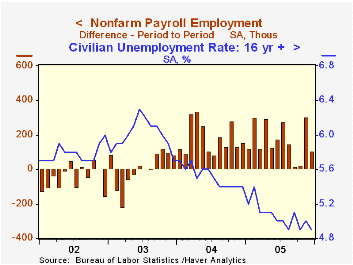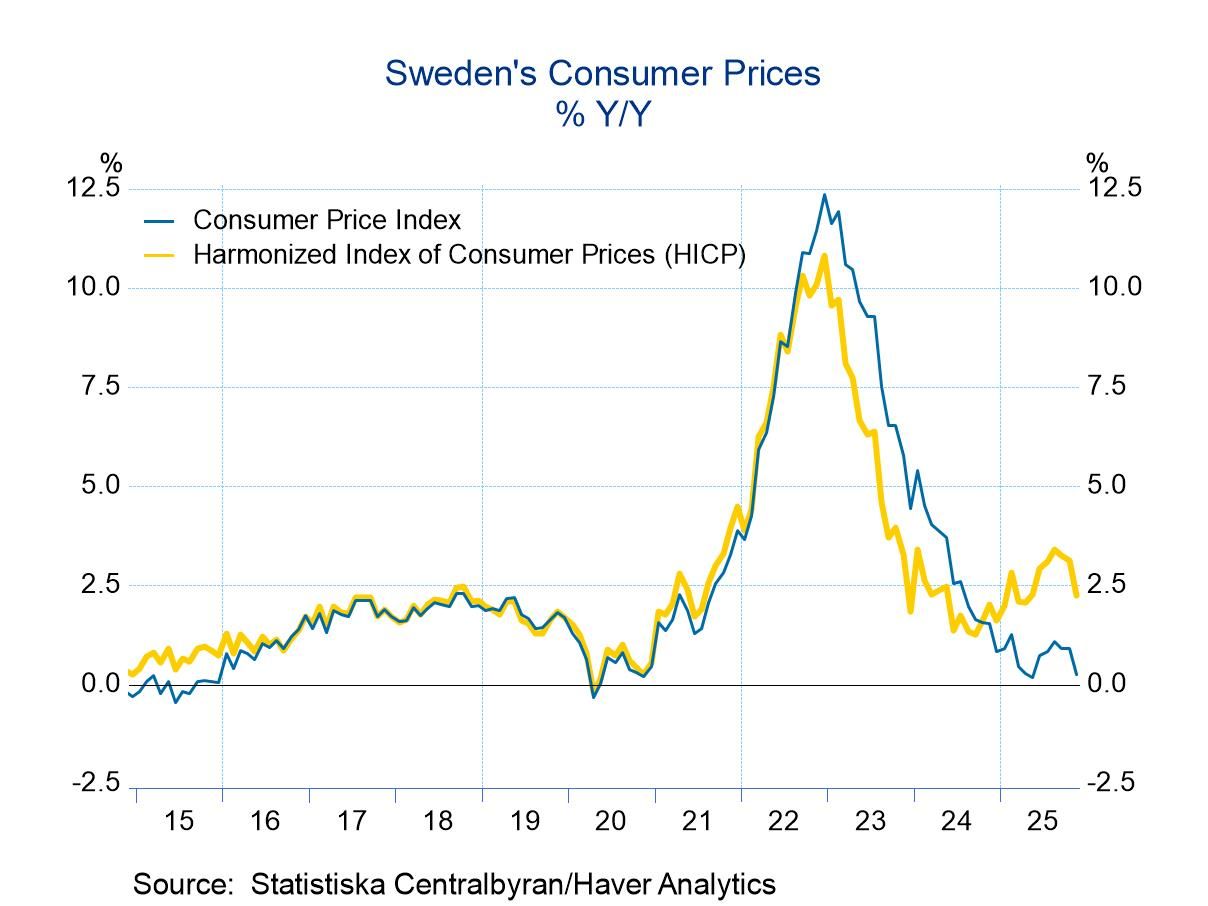 Global| Jan 06 2006
Global| Jan 06 2006Shortfall in U.S. Payrolls Offset By Upward Revision
by:Tom Moeller
|in:Economy in Brief
Summary
Non-farm payrolls in December grew just 108,000. Nevertheless, when averaged with a November increase revised up to 305,000 from 215,000 reported initially, the gain was a sharp improvement from the prior two months' average of just [...]

Non-farm payrolls in December grew just 108,000. Nevertheless, when averaged with a November increase revised up to 305,000 from 215,000 reported initially, the gain was a sharp improvement from the prior two months' average of just 21,000. Consensus expectations had been for a 200,000 increase in December. The average monthly increase in payrolls during 2005 was 179,300 versus 123,000 during 2004.
From the household survey the unemployment rate fell to 4.9%, a bit lower than expected. Employment rose 168,000 (1.9% y/y) after a 14,000 decline in November, revised shallower from the initial report. The labor force fell 30,000 (1.3% y/y).
Factory sector payrolls increased 18,000 (-0.4% y/y). The average gain in factory payrolls during the last three months of 13,000 is the best showing since mid-2004. An improvement in the industry breadth of gain during that period to 54.8% reflected gains in durable manufacturing but not nondurables.
Construction employment fell 9,000 (+3.5% y/y) following an upwardly revised 42,000 increase in November.
Private service producing payrolls rose a modest 82,000 (1.8% y/y) last month though the November increase was revised to 228,000 from 144,000. Retail trade jobs declined for the fourth month in the last five (+0.6% y/y) and job losses were widespread amongst industries. Education & health services jobs increased 25,000 (2.1% y/y) and remained on the earlier pace while professional & business services jobs rose 33,000(2.9% y/y). Jobs in financial services rose 12,000 (2.3% y/y) and leisure & hospitality rose 23,000 (1.9% y/y) and November's increase was revised up sharply.
Average hourly earnings were a bit stronger than expected, rising 0.3%, but the prior month's gain was lessened. Factory sector earnings rose just 0.1% (2.3% y/y) following no change in November.
Higher education and economic growth from the Federal Reserve Bank of Chicago can be found here.
| Employment | Dec | Nov | Y/Y | 2005 | 2004 | 2003 |
|---|---|---|---|---|---|---|
| Payroll Employment | 108,000 | 305,000 | 1.5% | 1.6% | 1.1% | -0.3% |
| Manufacturing | 18,000 | 8,000 | -0.4% | -0.3% | -1.2% | -4.9% |
| Average Weekly Hours | 33.7 | 33.8 | 33.7 (Dec '04) | 33.7 | 33.7 | 33.7 |
| Average Hourly Earnings | 0.3% | 0.1% | 3.1% | 2.8% | 2.1% | 2.7% |
| Unemployment Rate | 4.9% | 5.0% | 5.4% (Dec '04) | 5.1% | 5.5% | 6.0% |
Tom Moeller
AuthorMore in Author Profile »Prior to joining Haver Analytics in 2000, Mr. Moeller worked as the Economist at Chancellor Capital Management from 1985 to 1999. There, he developed comprehensive economic forecasts and interpreted economic data for equity and fixed income portfolio managers. Also at Chancellor, Mr. Moeller worked as an equity analyst and was responsible for researching and rating companies in the economically sensitive automobile and housing industries for investment in Chancellor’s equity portfolio. Prior to joining Chancellor, Mr. Moeller was an Economist at Citibank from 1979 to 1984. He also analyzed pricing behavior in the metals industry for the Council on Wage and Price Stability in Washington, D.C. In 1999, Mr. Moeller received the award for most accurate forecast from the Forecasters' Club of New York. From 1990 to 1992 he was President of the New York Association for Business Economists. Mr. Moeller earned an M.B.A. in Finance from Fordham University, where he graduated in 1987. He holds a Bachelor of Arts in Economics from George Washington University.






